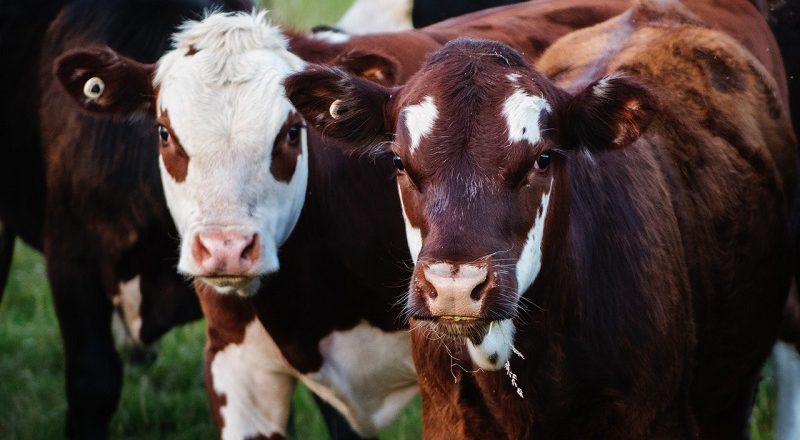
The future of livestock in Europe: the EU study
An independent study carried out for the European Commission confirms the livestock sector’s essential role from an environmental, economic, and social perspective.
To find an answer to livestock’s sustainable future in the Old Continent, the European Commission has requested a study from independent experts. It showed that the livestock sector is essential from an environmental, economic, and social perspective. Some critical issues are offset by the advantages deriving from it. Besides, a systemic approach is needed to improve sustainability.
The importance of livestock farming
According to the results of this study, ‘Study on Future of EU livestock: How to contribute to a sustainable agricultural sector?’, the livestock sector contributes substantially to the European economy. In 2017, animal production’s value amounted to 170 billion euros in the European Union, 40% of the agricultural activity turnover.
In 2017, the value of #AnimalProduction was 170 billion euros, 40% of the turnover of #Agricultural activity. Click To TweetLivestock farms are in almost all European countries. Essential aspects of employment (they employ about 4 million people), part of the variety of typical local products, and rural traditions’ survival are related to livestock farming. Besides, there is a link between extensive livestock farming and biodiversity. Permanent grazing areas, agricultural land used to cultivate grass or other herbaceous forage plants prevent land abandonment and are useful for soil care. About 50% of Europe’s endemic plant species and 50% of bird species depend on the meadows’ habitat.
The effects of livestock farming on the environment
The livestock sector has some negative impacts on the environment, linked to the consumption of resources and the production of polluting substances, primarily climate-changing greenhouse gases (GHGs). According to the study’s calculations, in 2017, the EU agricultural sector generated 10% of total greenhouse gas emissions, a percentage of pollution lower than that produced by industry (38%) and transport (21%).
Since almost half of the agricultural emissions (mainly methane, nitrogen oxide, and carbon dioxide) produced in the European Union come from enteric fermentation of ruminants and the management of livestock manure, the authors of the study identify the way to reduce greenhouse gas emissions in better control of waste from the supply chain, feed and individual animals raised (which are decreasing, for example, between 1990 and 2003 they were reduced by 24%).
In 2017, the EU #Agricultural sector generated 10% of #GHGs total #emissions, #industry 38% and #transport 21%. Click To TweetAmong the main strategies for reducing emissions related to livestock activity, much has been done – and there is still room for improvement – with feed, whose nutrients emit less methane than those raised extensively and fed on pasture. Acting on feed reduces nutrient excretion (nitrogen and organic matter) and enteric methane emissions related to metabolic processes. According to the authors of the study, actions to contain emissions in the various phases of effluent management, from the shelter to the distribution of manure in the field, must be improved since losses range from 30 to 75% of nitrogen excreted from animals. Necessary to control the manure chain can manage nitrogen and reduce purchases of synthetic nitrogen fertilizer used in agriculture.
What to do for greater livestock sustainability
“The sustainability of livestock – you can read in the study – could be improved: increasing efficiency, replacing high environmental impact inputs with low impact alternatives, and redesigning some aspects of the supply chain with a view to a circular economy.”
Improving efficiency can lead to reductions in physical flows in and out of the production system and decrease their negative impacts. Reducing the number of animals needed per unit of a finished product by focusing on genetically more productive livestock, with a low mortality/disease rate and a high fertility rate leads to a reduction in nitrogen and methane emissions (both enteric and from manure) per kg of milk, meat or eggs produced.
To this efficiency must be added that of greater circularity of resources, using new technologies and knowledge. For example, better-integrating crops and livestock maximizes the latter’s ability to feed on inedible biomass for human consumption to reduce pesticides and synthetic fertilizers for new crops.
EU study: #livestock can contribute to increasing the #circularity of #FoodSystem. #EULivestock #CircularEconomy Click To TweetA second solution is to find the least ecologically impacting alternatives. For example, soil nitrogen: legumes fix this substance in the soil, a beneficial substance for crop growth. Sowing more legumes and better managing the manure cycle would reduce the amount of synthetic fertilizer to use on soils to benefit the ecosystem and the benefit of the farm economy (optimizing effluent waste implies lower disposal costs).
A third option is to identify the synergies that can result from the integration of processes: livestock can increase the “circularity” of food systems. Cattle can be fed with plant matter from by-products of the food industry or inedible for humans. They can enhance even low-quality nitrogenous sources (ruminants can even turn inorganic nitrogen into proteins in the rumen) and extract nourishment from the indigestible cellulose. Simultaneously, the treated livestock waste can be useful for fertilizing soils naturally and producing biogas, therefore renewable energy for farms or other economic sectors. These are all already active solutions, but they must be implemented at the highest level in all countries.
The conclusions of the European study leave no room for doubt: we save together. Livestock farming is essential for its social, environmental, and economic role. Still, action must be taken to make the entire agricultural sector less impacting the ecosystem. Will we succeed? It all depends on the commitment of the individual countries.






